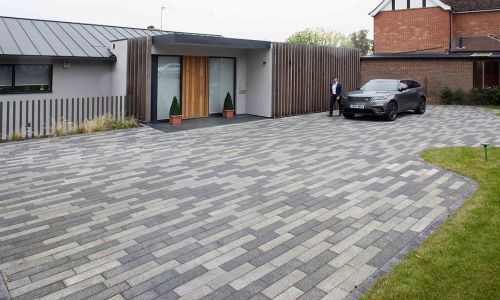Smooth Surface In Surrey
Get a FREE quote!
About us
Driveway & Patio Installer Company In Essex
We are a local driveway and patio installer company in Essex. Our team is dedicated to providing quality work at affordable prices. We have been in the industry for over 15 years and we know what it takes to create the best possible results. Our team is ready to help you with any kind of paving project, whether it’s a residential driveway or a commercial parking lot. Get in touch with us today and we will provide you with all the information you need about our services.
SPECIALIZATION

Patios

Block Paving

Asphalt & Tarmac

Resin-Bound Surfaces
History of Surrey
Surrey is a county located in the southeastern part of England, bordering Greater London. It has a rich and varied history that stretches back thousands of years. Here is an overview of the history of Surrey:
Ancient History: The area that is now Surrey has been inhabited since ancient times. Evidence of human presence dates back to the Paleolithic era, and there are numerous prehistoric burial sites and earthworks scattered across the county. During the Roman period, Surrey was part of the province of Britannia and was crossed by important Roman roads, including the London to Chichester road (Stane Street) and the London to Brighton road (London Road).
Anglo-Saxon and Norman Period: After the fall of the Roman Empire, the Anglo-Saxons settled in the region. Surrey was initially part of the Kingdom of Kent but later became part of the Kingdom of Wessex. The Anglo-Saxon influence is still evident in place names, such as Ewell (from the Old English “aewell” meaning “river source”) and Croydon (from the Old English “croh” meaning “crocus” and “denu” meaning “valley”).
In 1066, William the Conqueror invaded England and the Normans established control over Surrey. They built castles, such as Guildford Castle and Reigate Castle, to exert their authority and maintain control over the area. The Normans also established religious houses, including the influential Waverley Abbey near Farnham.
Medieval and Tudor Era: During the Middle Ages, Surrey’s economy was primarily based on agriculture, with the cultivation of crops like wheat, barley, and oats. The county also had thriving industries such as ironworking, pottery, and tanning. Several market towns, including Guildford, Reigate, and Farnham, grew in importance during this period.
In the Tudor era, Henry VIII’s dissolution of the monasteries resulted in the closure of many religious institutions in Surrey. However, Henry VIII retained ownership of some monastic estates, including the royal palaces of Nonsuch Palace and Hampton Court Palace, which became significant centers of power and influence.
Industrial Revolution and Modern Era: During the Industrial Revolution, Surrey experienced significant changes. The advent of the railway in the 19th century led to the growth of towns and the development of industries such as brickmaking and paper milling. The county also became a popular residential area for wealthy Londoners seeking to escape the city.
Surrey played a significant role during World War II as it was home to several military installations and was targeted by German bombing raids. The county also served as a base for military planning and operations, including the preparation for the D-Day invasion in 1944.
In recent years, Surrey has continued to develop as a prosperous county. It is known for its affluent towns and villages, scenic countryside, and thriving economy. The county is home to a number of technology and research parks, as well as renowned educational institutions such as the University of Surrey.
Today, Surrey is a vibrant county with a mix of historic landmarks, natural beauty, and modern amenities. It attracts visitors with its picturesque landscapes, stately homes, such as Polesden Lacey and Loseley Park, and attractions like the historic town of Guildford and the Surrey Hills Area of Outstanding Natural Beauty.